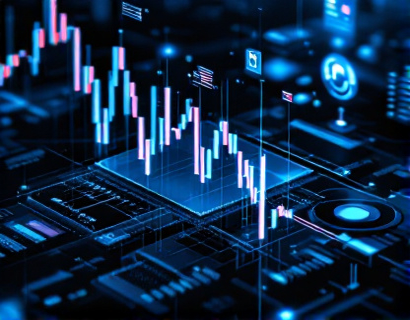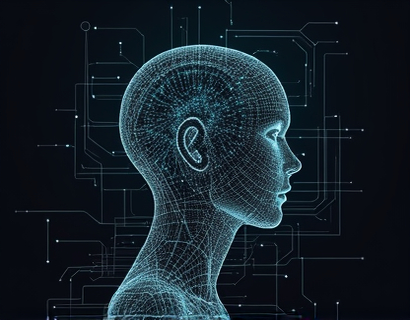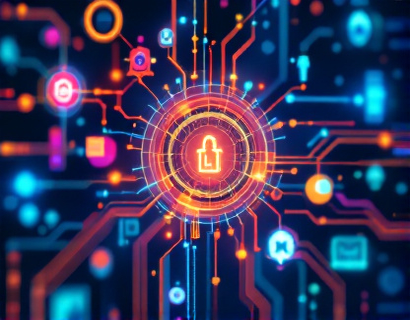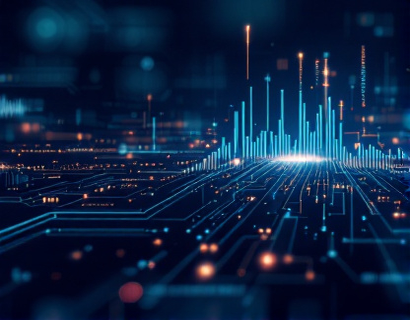Ethereum Layer 2: 2025 Insights - Mastering Scalability and Interoperability for Developers and Enthusiasts
As the Ethereum ecosystem continues to evolve, Layer 2 solutions have emerged as a critical component in addressing scalability and interoperability challenges. This comprehensive guide aims to provide developers and enthusiasts with essential insights and the latest updates to navigate the dynamic and evolving Ethereum landscape. In 2025, the focus on Layer 2 technologies remains paramount, as they play a pivotal role in enhancing the efficiency and accessibility of the Ethereum network.
Layer 2 solutions are designed to operate on top of the main Ethereum blockchain, or Layer 1, to offload transactions and reduce congestion. This approach not only improves transaction throughput but also lowers gas fees, making the network more user-friendly and accessible. The primary goal of Layer 2 is to maintain the security and decentralization of Ethereum while significantly enhancing performance.
Understanding Layer 2 Solutions
To effectively master Layer 2, it's crucial to understand the different types of solutions being developed. The two main categories are state channels and sidechains.
State channels, such as Lightning Network for Bitcoin and Raiden Network for Ethereum, allow for multiple transactions to occur off-chain, with only the final state being recorded on the main blockchain. This method is highly efficient for frequent, small-value transactions, as it minimizes the load on the main chain.
Sidechains, on the other hand, are separate blockchains that are linked to the Ethereum main chain through two-way pegs. They operate independently but can transfer assets and data back and forth with Ethereum. Examples include Polygon and Optimism, which have gained significant traction in 2025 for their ability to provide faster and cheaper transactions.
Recent Developments in Layer 2
2025 has seen several notable advancements in Layer 2 technologies. One of the most significant developments is the continued improvement of Optimism, a popular rollup solution. Optimism has introduced enhancements to its Optimistic Rollups, focusing on faster confirmation times and higher transaction throughput. These improvements have made Optimism a leading choice for developers looking to deploy scalable dApps.
Another key player, Polygon, has expanded its network capabilities with the introduction of Polygon ZRX, which offers enhanced security and interoperability features. The integration of ZRX with major decentralized finance (DeFi) protocols has further solidified Polygon's position in the Layer 2 space.
Layer 2 interoperability has also been a focus area. Projects like Cosmos and Polkadot have been working on creating cross-chain bridges that allow different Layer 2 networks to communicate and transfer assets seamlessly. This interoperability is crucial for building a unified and interconnected blockchain ecosystem.
Developer Tools and Resources
For developers looking to leverage Layer 2 solutions, a variety of tools and resources are available. Development frameworks and libraries have been created to simplify the process of building on Layer 2 networks. For instance, the Optimism SDK and the Polygon SDK provide comprehensive tools for developers to deploy and manage their applications.
The Ethereum Developers Toolbox, maintained by the Ethereum Foundation, offers a range of utilities and documentation to help developers understand and implement Layer 2 solutions. Additionally, community-driven platforms like GitHub host numerous open-source projects and libraries that facilitate Layer 2 development.
Use Cases and Applications
Layer 2 solutions are not just theoretical concepts; they have practical applications across various domains. In the realm of decentralized finance (DeFi), Layer 2 rollups have enabled the creation of complex financial products with lower fees and faster settlement times. This has democratized access to financial services, making them more accessible to a global audience.
Gaming is another area where Layer 2 technologies shine. Games that require real-time transactions and low latency benefit greatly from the improved performance of Layer 2 networks. Projects like Axie Infinity and Sandbox have leveraged Layer 2 solutions to enhance user experience and reduce costs.
Non-fungible tokens (NFTs) have also seen a surge in Layer 2 adoption. The high gas fees on Ethereum have been a barrier for NFT creators and collectors. Layer 2 solutions like Flow and Binance Smart Chain (which uses Layer 2 techniques) have provided more affordable and scalable alternatives for NFT marketplaces.
Challenges and Considerations
While Layer 2 solutions offer significant benefits, they also come with challenges that developers and users must consider. One of the primary concerns is the complexity of implementing and integrating Layer 2 protocols. Developers need to stay updated with the latest best practices and security considerations to ensure their applications are robust and secure.
Another challenge is the potential for fragmentation within the Layer 2 ecosystem. With multiple rollup and sidechain solutions, users and developers may face choices that impact compatibility and interoperability. Standardization efforts and community collaboration are essential to address these issues.
Gas fee dynamics are also an important factor. While Layer 2 solutions aim to reduce fees, the cost structure can vary based on network conditions and usage patterns. Developers should monitor these factors to optimize their applications for cost efficiency.
Future Outlook
Looking ahead, the Layer 2 space is poised for further growth and innovation. The Ethereum 2.0 upgrade, which includes the transition to a proof-of-stake (PoS) consensus mechanism, is expected to complement Layer 2 solutions by enhancing network scalability and security. This upgrade will create a more robust foundation for Layer 2 technologies to thrive.
Interoperability will continue to be a key focus, with ongoing developments in cross-chain protocols and atomic swaps. The ability to seamlessly move assets and data between different blockchain ecosystems will unlock new possibilities for decentralized applications and services.
As the demand for scalable and efficient blockchain solutions grows, Layer 2 technologies will play an increasingly vital role. Developers and enthusiasts who stay informed and adapt to these changes will be well-positioned to contribute to and benefit from the evolving Ethereum landscape.
In conclusion, mastering Layer 2 solutions is essential for anyone involved in the Ethereum ecosystem. By understanding the different types of Layer 2 technologies, staying updated with the latest developments, and addressing the associated challenges, developers and enthusiasts can harness the full potential of Ethereum's future.










































